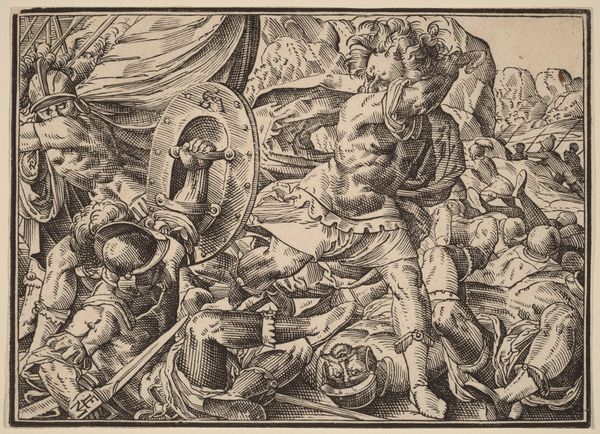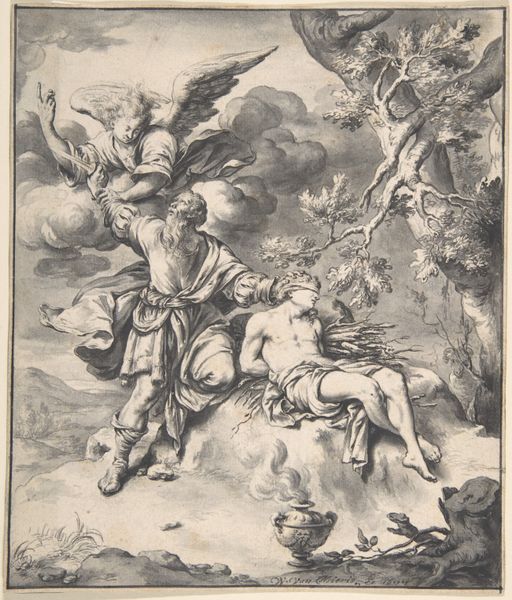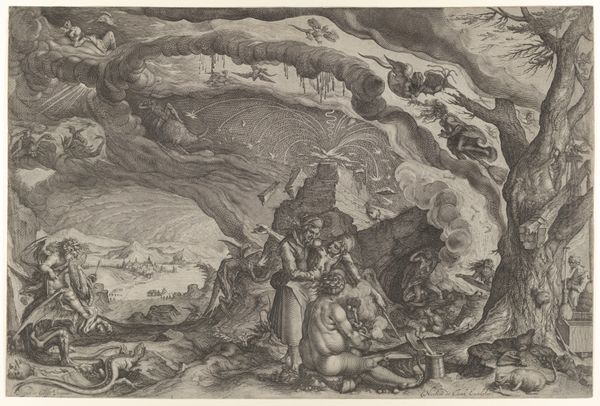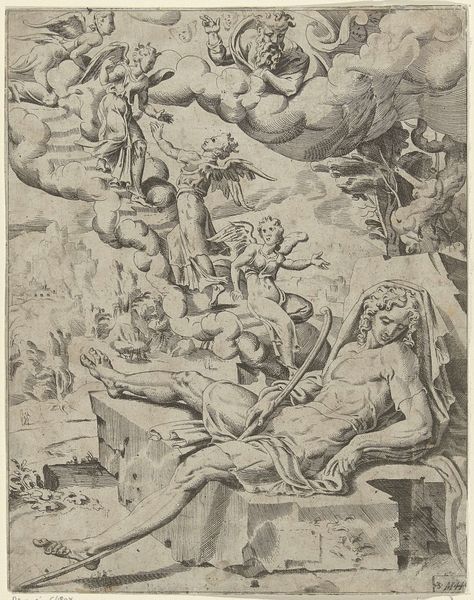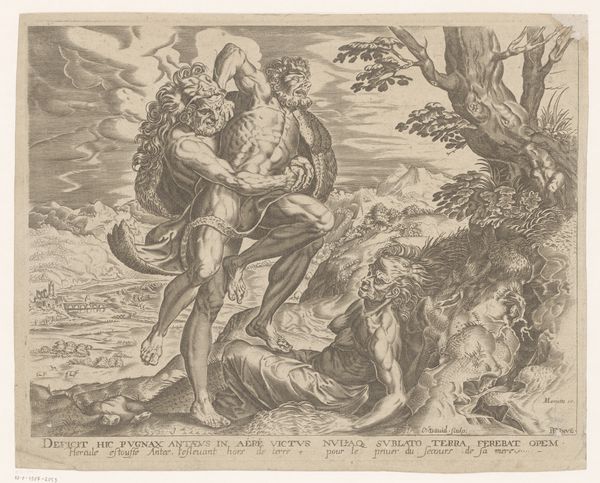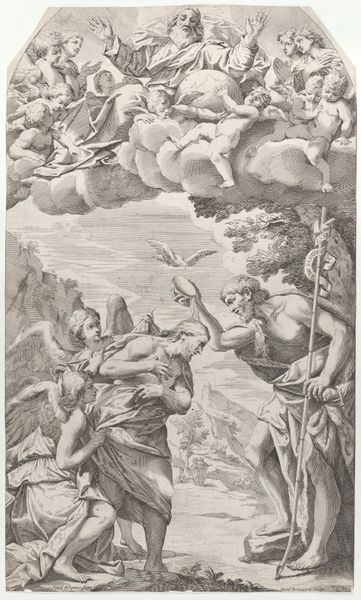
drawing, print, ink, engraving
#
drawing
#
narrative-art
#
pen drawing
# print
#
pen illustration
#
pen sketch
#
landscape
#
mannerism
#
figuration
#
ink
#
line
#
history-painting
#
engraving
Dimensions: sheet: 10.7 x 14.7 cm (4 3/16 x 5 13/16 in.)
Copyright: National Gallery of Art: CC0 1.0
Curator: It gives me shivers, that end-of-days feel—makes you wonder what the artist was going through when they made it. Editor: Well, let's begin by setting the stage. Here we have "The Four Horsemen of the Apocalypse," attributed to Christoph Murer, possibly around 1630. It's an engraving, so ink on paper, and rendered with such intricate detail. Curator: Intricate is one word for it! Claustrophobic might be another. There's so much detail packed in, almost violently so. But what is it really? A landscape with what could be an angel and writing desk placed somewhat arbitrarily? Editor: Arbitrarily? I would say it is an extremely intentional construction. The artist has very cleverly applied line technique to direct your eye across the scene in terms of a semiotic grid; dense clusters signify turmoil or conflict. Notice how he uses hatching to suggest form and volume. And see how line thickness changes to add emphasis and depth. Curator: All of which builds up this sense of dread. It is a biblical doomsday scenario so it’s no real surprise. What’s really arresting is the calm in the chaos—that serene landscape almost looks like he added it for irony. Almost taunting us with what we are about to lose. The birds in the distance above the architectural construct, presumably Heaven, add the only glimpse of true hope. Editor: That balance is crucial to the engraving’s effect. Structurally speaking, the interplay between the angel on one side and the symbolic vortex is incredibly forceful. The pen strokes used also gives us an insight to the historical background in question with references to landscapes like Hieronymus Bosch’s work. Curator: Knowing all of this just throws fuel onto my existing feelings. It does not soothe me; in fact it enrages me, makes me sad that so many before me had similar feelings in regards to our fate as species as what I feel today. It has lasted nearly half a millennium; that is truly the apocalyptic part for me. Editor: And there you have it—a perfect example of how even within a rigorous formal structure, art can evoke a profound and personal resonance that extends far beyond the immediate visual experience. Curator: Right! It shakes you awake, reminds you you’re alive…while whispering that it might not last. What more can art do?
Comments
No comments
Be the first to comment and join the conversation on the ultimate creative platform.


